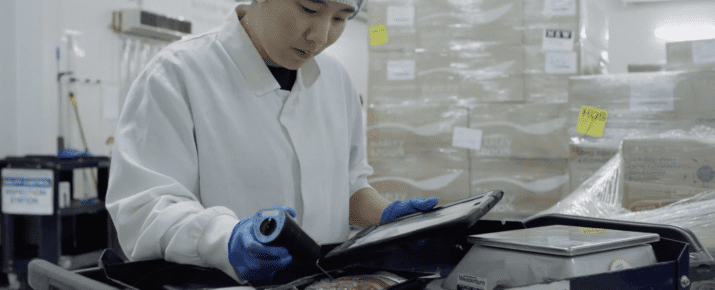How This Company Uses Audits to Encourage – Not Intimidate
Checklist Best Practices | By | 24 Mar 2017 | 5 minute read

It’s not every day that store managers contact their corporate headquarters and say their inspection scores are too high. But that was the case with MotoMart, a convenience store chain with 79 locations across the Midwest. Store managers felt comfortable doing this because MotoMart had worked hard to cultivate a culture in which store associates were proud of their work and took compliance seriously. The company had previously used mystery shoppers to track the customer experience, but because those mystery shoppers needed to examine details carefully, the mystery was often lost. There are also certain places where a normal or mystery shopper wouldn’t have access, think back rooms and staff areas, and so those areas weren’t inspected at all. Both the cursory look that mystery shoppers were taking and the areas that they were unable to go led to inflated scores from mystery shoppers that were not true indications of how well or poorly the store was being run.
Rob Forsyth, president of Moto, Inc., parent company of the convenience store chain, cites a dedication to the customer experience as the catalyst for store managers raising their hands and asking for a better inspection process. “If you’re serious about elevating your level of customer experience, the mystery shoppers just weren’t working for us because they’re not giving an accurate read on the whole store.” That’s when MotoMart “booted out” the mystery shopping program and deputized a team of 34 auditors within the company. They also transferred much of their handbook material on safety and operational procedures, store setup and brand guidelines to checklist templates in SafetyCulture iAuditor. These inspections can include everything from marketing display materials, to parking lot appearance, to safety procedures. While mystery shopping covered some of the customers’ experience, the new style of inspections delivered a much broader and more in depth view of the entire operational success or failure of the business.
Get leadership involved
You might assume, like I did, that this team of auditors would include store managers and associates. What MotoMart did differently, is deputize employees at all levels of the organization. This means all the executives and home office departments heads (the CEO, the Presidents, people in accounting, fuel purchasing, maintenance and IT technicians) were all getting into the stores once every other month to conduct 50-point inspections on varying areas of the store. Rob thinks this is absolutely crucial to maintain a connection between not just executives and the customer experience, but executives and store associates as well. Rob says, “It’s funny to see the CEO pulling up a metal lid in the driveway up to tug on a fuel tank lid to check that it is secure and locked, getting his hands dirty. But it keeps us all connected and accountable to the company and to our goals.”
“It’s almost an epidemic in companies in the US that a lot of executives get so separated from what really matters in the company and what’s actually happening in the field.” Because MotoMart has all executives step into the field, they’re faced with problems that store associates may not even be responsible for. Frequently it’s the home office or third party suppliers who are contributing to areas of non-compliance.
Prep employees beforehand
Rob puts a lot of stock in an “open book test” as he calls it. Ten days prior to the beginning of each month a new inspection is sent to the stores. The store managers know exactly what criteria they will be inspected on in the coming month. “Our inspections really mirror a training document because it’ll says things like ‘check on this’ and then provides hints as to what exactly to look for and why.” The home office works hard to approach store managers and associates not as inspectors, but as appreciative home office ambassadors and trainers, because everyone is working together to create the best customer experience and keep everyone safe. Auditors will also prompt discussions around why certain procedures exist or what to do in certain situations. It’s one thing to learn about how to handle a fire outside at a fuel dispenser in the classroom, but it’s another to be standing right beside a fuel dispenser and speaking with a front-line employee about the proper procedure. Rob says, “You never quite know whether the message got through until someone comes in and looks you dead in the eye behind the sales counter and asks the questions.”

This open book test not only alleviates anxiety about an inspection, but it supports a culture of learning and open discussion. Associates can check their store beforehand to make sure everything is compliant, but can also reference guidelines they may have forgotten or learn new procedures. This way, when the auditor comes to the store, they can have a productive conversation around procedures and even improve these procedures thanks to associate input. Auditors get a real education on what is actually happening from the employees on the front-lines. Some of the company’s best ideas have come from the people who know the business best – that is, the people who run the stores and help the customers.
Create an avenue for employee feedback
Because the team at MotoMart works hard to maintain this encouraging atmosphere, they have dedicated avenues of communication between associates in the stores and the home office. In each inspection, there’s a long text field that requires each inspector to take a deep breath and suggest at least three things that will improve the store from a customer or employee perspective.
Often these suggestions are added to the company handbook and capital spending is based upon the needed improvements the inspectors have identified. Elizabeth Gans, Customer Service and Operations Specialist at MotoMart, says if some stores in a certain region are seeing the same issue, they’ll change policies, start new projects or provide more support services to a given set of stores to remedy an issue. For example, if marketing materials aren’t arriving when stores need them, not only is there heightened accountability because people at the highest levels of the company are aware of the issues (because they are the inspectors) but procedures and training are streamlined the fix the items that make a difference at store-level.
Reward compliance and high scores
One of the most overt ways to provide positive reinforcement for compliance is through rewards. Sometimes for MotoMart, this comes in the form of company recognition, but it also frequently has a monetary reward attached to it. MotoMart uses SafetyCulture Analytics to track scores at each store and bases year-end manager bonuses on them. This reward system goes beyond the managers though. If stores receive scores on their inspections of 90% or above, every store employee gets a certain number of points that they can redeem to buy merchandise from an online store. Scores above 95% get twice the number of points.
The vast majority of the stores win frequently, which Rob also credits to creating an encouraging culture around auditing. “It’s about having people identify themselves and their store teams as winners.” He contends winners will work harder to stay in the winning column versus stores that only occasionally win. Many store managers insist that other MotoMart stores are run well as measured by inspection scores, because they want the entire company in the winning column so the overall brand reputation is top-notch.
For some people, the term “audit” or “inspection” elicits tension. They think auditors are looking for “gotcha” moments. What a team should be doing, is looking for things that are going well, where things could be improved, and providing the training and discussion to support those improvements. It also can’t be a one-way street, with auditors simply pushing compliances standards down to stores. There needs to be formal and informal ways for stores to communicate with home office decision makers so decisions these company leaders make are well-informed and have a better chance of achieving the intended result.
Important Notice
The information contained in this article is general in nature and you should consider whether the information is appropriate to your specific needs. Legal and other matters referred to in this article are based on our interpretation of laws existing at the time and should not be relied on in place of professional advice. We are not responsible for the content of any site owned by a third party that may be linked to this article. SafetyCulture disclaims all liability (except for any liability which by law cannot be excluded) for any error, inaccuracy, or omission from the information contained in this article, any site linked to this article, and any loss or damage suffered by any person directly or indirectly through relying on this information.





